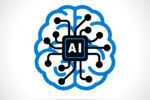This story was originally published by Chalkbeat. Sign up for their newsletters at ckbe.at/newsletters.
More than a decade ago, while running a high-performing school that I loved, a small moment forever shifted how I lead. As a Black woman who was a teenage mother and had dropped out of high school, I was proud of my career and taking great care to figure out what was next.
Create your Free Account to Continue Reading
eSchool News is Free for qualified educators. Sign up or login
to access all our K-12 news and resources.
Please confirm your email address
More News from eSchool News
Tom Lamont is the painting and design technology instructor at Blackstone Valley Regional Vocational Technical High School (BVT), in Upton, Massachusetts. Mr. Lamont offers his vocational high school students a unique hands-on opportunity to learn about the design industry and to prepare for jobs in the workforce.
Want to share a great resource? Let us know at submissions@eschoolmedia.com.












